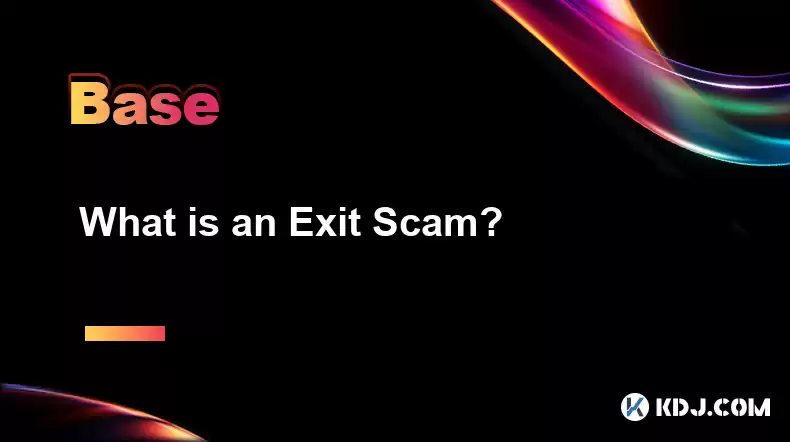-
 Bitcoin
Bitcoin $114200
0.00% -
 Ethereum
Ethereum $3637
0.56% -
 XRP
XRP $2.950
-2.01% -
 Tether USDt
Tether USDt $0.9999
0.02% -
 BNB
BNB $761.0
0.55% -
 Solana
Solana $164.1
-1.38% -
 USDC
USDC $0.9999
0.02% -
 TRON
TRON $0.3332
0.36% -
 Dogecoin
Dogecoin $0.2012
-0.52% -
 Cardano
Cardano $0.7261
-1.41% -
 Hyperliquid
Hyperliquid $37.62
-2.13% -
 Stellar
Stellar $0.3930
-2.65% -
 Sui
Sui $3.441
-0.16% -
 Bitcoin Cash
Bitcoin Cash $563.8
0.70% -
 Chainlink
Chainlink $16.50
0.09% -
 Hedera
Hedera $0.2424
-0.14% -
 Ethena USDe
Ethena USDe $1.001
0.01% -
 Avalanche
Avalanche $22.20
0.00% -
 Litecoin
Litecoin $118.0
-2.48% -
 UNUS SED LEO
UNUS SED LEO $8.991
0.12% -
 Toncoin
Toncoin $3.195
-3.87% -
 Shiba Inu
Shiba Inu $0.00001217
0.12% -
 Uniswap
Uniswap $9.674
-0.21% -
 Polkadot
Polkadot $3.633
1.00% -
 Monero
Monero $295.3
-0.82% -
 Dai
Dai $0.9999
0.00% -
 Bitget Token
Bitget Token $4.321
-0.41% -
 Cronos
Cronos $0.1392
0.73% -
 Pepe
Pepe $0.00001027
-0.89% -
 Aave
Aave $258.5
0.32%
What is an Exit Scam?
Exit scams in crypto involve operators vanishing with funds, leaving investors with worthless assets; awareness and research are key to prevention.
Apr 09, 2025 at 06:57 pm

An exit scam is a fraudulent practice within the cryptocurrency industry where the operators of a project or platform suddenly disappear with investors' funds. This deceptive tactic leaves investors with worthless tokens or assets, causing significant financial losses. Exit scams are particularly prevalent in the decentralized and less regulated nature of the cryptocurrency market, making it crucial for investors to be aware of the signs and take preventive measures.
Understanding the Mechanics of an Exit Scam
An exit scam typically involves a project that appears legitimate and promising, attracting investors with the allure of high returns or innovative technology. The operators behind the scam build trust and credibility over time, often through marketing campaigns, social media presence, and seemingly genuine progress updates. Once a substantial amount of funds has been raised, the scammers abruptly cease operations, withdraw all accessible funds, and disappear without a trace. This sudden disappearance leaves investors unable to access their investments, resulting in significant financial losses.
Common Signs of an Exit Scam
Identifying an exit scam before it happens can be challenging, but there are several red flags that investors should be aware of. Lack of transparency is a major indicator; if a project is unwilling to provide clear information about its team, roadmap, or financials, it may be a cause for concern. Another warning sign is overly aggressive marketing that promises unrealistic returns or uses high-pressure tactics to encourage investment. Additionally, delays in project milestones without reasonable explanations or a sudden change in the project's direction can also signal potential fraud. Investors should also be wary of projects that rely heavily on hype and FOMO (Fear Of Missing Out) rather than solid fundamentals.
Notable Examples of Exit Scams
The cryptocurrency industry has seen several high-profile exit scams that have resulted in millions of dollars in losses. One notable example is the Bitconnect scam, which operated as a lending and exchange platform promising high returns through a proprietary trading bot. In January 2018, Bitconnect abruptly shut down its lending and exchange operations, and its value plummeted, leaving investors with significant losses. Another example is the PlusToken scam, which was a Ponzi scheme disguised as a cryptocurrency wallet. In 2019, the operators of PlusToken vanished with an estimated $3 billion in investor funds, making it one of the largest exit scams in cryptocurrency history.
Preventive Measures Against Exit Scams
To protect themselves from falling victim to an exit scam, investors should take several precautionary steps. Conduct thorough research on the project, its team, and its technology before investing. This includes reviewing the project's whitepaper, checking the team's credentials, and looking for any red flags in their history. Diversify investments to minimize the impact of a potential scam on the overall portfolio. Engage with the community and seek feedback from other investors and experts to gain a more comprehensive understanding of the project's legitimacy. Finally, be skeptical of projects that promise unusually high returns with little to no risk, as these are often too good to be true.
Steps to Take if You Suspect an Exit Scam
If you suspect that a project you have invested in may be an exit scam, there are several steps you can take to mitigate your losses and seek recourse.
- Stop investing immediately and do not make any further contributions to the project.
- Document all transactions and communications with the project, including emails, social media interactions, and any other relevant evidence.
- Report the suspected scam to the appropriate authorities, such as the Federal Trade Commission (FTC) in the United States or similar agencies in other countries.
- Join forces with other affected investors to share information and potentially pursue legal action against the scammers.
- Seek advice from a legal professional who specializes in cryptocurrency and fraud to explore your options for recovering your funds.
The Role of Regulation in Preventing Exit Scams
While the decentralized nature of cryptocurrencies makes it challenging to prevent exit scams entirely, regulatory measures can play a significant role in reducing their occurrence. Regulatory bodies can enforce stricter Know Your Customer (KYC) and Anti-Money Laundering (AML) policies to make it more difficult for scammers to operate anonymously. Additionally, requiring projects to undergo audits and provide regular financial reports can increase transparency and accountability. However, the effectiveness of these measures depends on the willingness of governments and regulatory agencies to adapt to the unique challenges posed by the cryptocurrency industry.
The Psychological Impact of Exit Scams
Exit scams not only result in financial losses but can also have a profound psychological impact on investors. The betrayal of trust can lead to feelings of anger, frustration, and helplessness. Many investors may become more cautious and skeptical of future investment opportunities, potentially missing out on legitimate projects. The emotional toll of losing hard-earned money can also lead to stress and anxiety, affecting an investor's overall well-being. It is important for investors to seek support from friends, family, or professional counselors to cope with the aftermath of an exit scam.
Frequently Asked Questions
Q: Can exit scams be completely prevented?
A: While it is impossible to completely eliminate the risk of exit scams, investors can significantly reduce their chances of falling victim by conducting thorough research, diversifying their investments, and staying vigilant for red flags.
Q: What should I do if I have already invested in a project that turns out to be an exit scam?
A: If you have invested in a project that turns out to be an exit scam, stop investing immediately, document all transactions and communications, report the scam to the appropriate authorities, and consider joining forces with other affected investors to pursue legal action.
Q: How can I verify the legitimacy of a cryptocurrency project's team?
A: To verify the legitimacy of a cryptocurrency project's team, research their professional backgrounds, check for any past involvement in scams or fraudulent activities, and look for endorsements or partnerships with reputable organizations.
Q: Are there any tools or resources available to help identify potential exit scams?
A: Yes, there are several tools and resources available to help identify potential exit scams, including cryptocurrency scam databases, community forums where investors share their experiences, and professional services that conduct due diligence on cryptocurrency projects.
Disclaimer:info@kdj.com
The information provided is not trading advice. kdj.com does not assume any responsibility for any investments made based on the information provided in this article. Cryptocurrencies are highly volatile and it is highly recommended that you invest with caution after thorough research!
If you believe that the content used on this website infringes your copyright, please contact us immediately (info@kdj.com) and we will delete it promptly.
- Binance, CZ, and the FTX Fallout: The $1.8 Billion Question
- 2025-08-06 18:30:12
- Brendan Rodgers, Celtic, and the Greg Taylor Role: A Tactical Conundrum
- 2025-08-06 18:50:12
- Coinbase Stock, Investment, and Earnings: Navigating Crypto's Tides
- 2025-08-06 18:55:54
- DALPY Coin: Investor Buzz Swirls Around Upcoming 'Game-Changing' Features
- 2025-08-06 18:30:12
- Fast-Moving Cryptos: Could Pudgy Penguins Deliver High Gains by 2025?
- 2025-08-06 16:30:11
- Crypto Gaming Tokens: August 2025 Investment Opportunities
- 2025-08-06 16:50:12
Related knowledge

What is the difference between CeFi and DeFi?
Jul 22,2025 at 12:28am
Understanding CeFi and DeFiIn the world of cryptocurrency, CeFi (Centralized Finance) and DeFi (Decentralized Finance) represent two distinct financia...

How to qualify for potential crypto airdrops?
Jul 23,2025 at 06:49am
Understanding What Crypto Airdrops AreCrypto airdrops refer to the distribution of free tokens or coins to a large number of wallet addresses, often u...

What is a crypto "airdrop farmer"?
Jul 24,2025 at 10:22pm
Understanding the Role of a Crypto 'Airdrop Farmer'A crypto 'airdrop farmer' refers to an individual who actively participates in cryptocurrency airdr...

What is the difference between a sidechain and a Layer 2?
Jul 20,2025 at 11:35pm
Understanding the Concept of SidechainsA sidechain is a separate blockchain that runs parallel to the main blockchain, typically the mainnet of a cryp...

What is the Inter-Blockchain Communication Protocol (IBC)?
Jul 19,2025 at 10:43am
Understanding the Inter-Blockchain Communication Protocol (IBC)The Inter-Blockchain Communication Protocol (IBC) is a cross-chain communication protoc...

How does sharding improve scalability?
Jul 20,2025 at 01:21am
Understanding Sharding in BlockchainSharding is a database partitioning technique that is increasingly being adopted in blockchain technology to enhan...

What is the difference between CeFi and DeFi?
Jul 22,2025 at 12:28am
Understanding CeFi and DeFiIn the world of cryptocurrency, CeFi (Centralized Finance) and DeFi (Decentralized Finance) represent two distinct financia...

How to qualify for potential crypto airdrops?
Jul 23,2025 at 06:49am
Understanding What Crypto Airdrops AreCrypto airdrops refer to the distribution of free tokens or coins to a large number of wallet addresses, often u...

What is a crypto "airdrop farmer"?
Jul 24,2025 at 10:22pm
Understanding the Role of a Crypto 'Airdrop Farmer'A crypto 'airdrop farmer' refers to an individual who actively participates in cryptocurrency airdr...

What is the difference between a sidechain and a Layer 2?
Jul 20,2025 at 11:35pm
Understanding the Concept of SidechainsA sidechain is a separate blockchain that runs parallel to the main blockchain, typically the mainnet of a cryp...

What is the Inter-Blockchain Communication Protocol (IBC)?
Jul 19,2025 at 10:43am
Understanding the Inter-Blockchain Communication Protocol (IBC)The Inter-Blockchain Communication Protocol (IBC) is a cross-chain communication protoc...

How does sharding improve scalability?
Jul 20,2025 at 01:21am
Understanding Sharding in BlockchainSharding is a database partitioning technique that is increasingly being adopted in blockchain technology to enhan...
See all articles

























































































